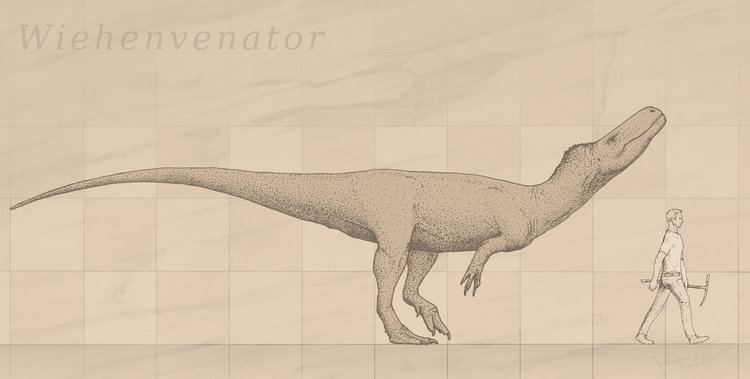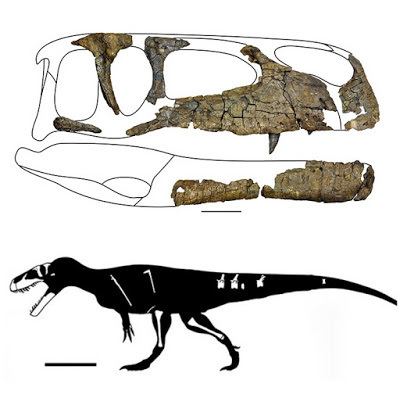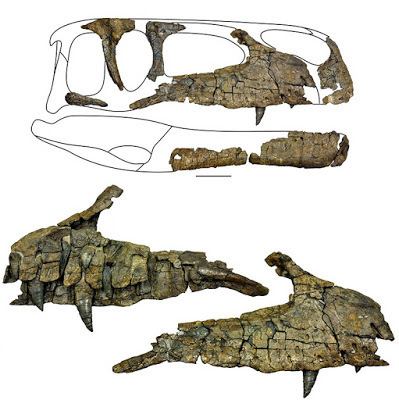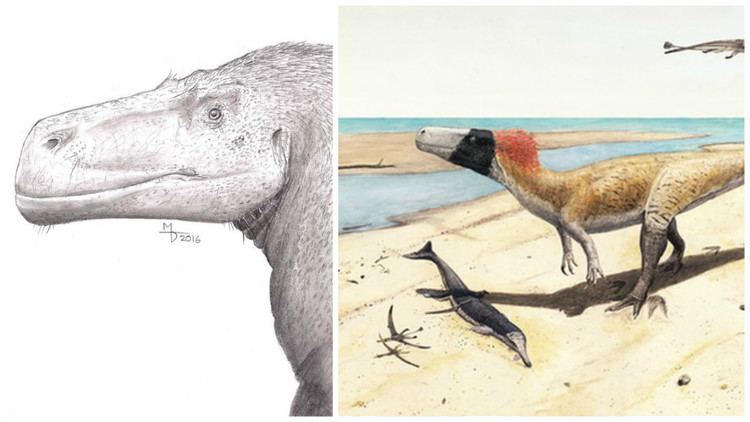Phylum Chordata | Class Reptilia Subfamily †Megalosaurinae Rank Genus | |
 | ||
Similar Megalosauridae, Torvosaurus, Edmarka, Saurischia, Epanterias | ||
Wiehenvenator is a genus of predatory megalosaurid theropod dinosaur from the Middle Jurassic (Callovian) of Germany.
In 1998, geologist Friedrich Albat discovered the remains of a large theropod at the abandoned Pott quarry in the Wiehen Hills near Minden, Westphalia. These were excavated between October 1998 and October 2001. The find received extensive press attention and was informally known as Das Monster von Minden (the Minden Monster). Reports in the German edition of the National Geographic of a rib 50% larger than that of Allosaurus stirred speculations of it being up to 15 metres (49 ft) in length. Thomas Holtz estimated it at 12 metres (39 ft) in 2012. Other researchers concluded to smaller dimensions: Mickey Mortimer in 2003 estimated the animal to be 7 to 8 metres (23 to 26 ft) in length and 0.75 to 1.2 metric tons (0.83 to 1.32 short tons) in weight.

In 2015, it was announced that the find had been identified as a new species of megalosaurid. In 2016, the fossils were named and described as the type species Wiehenvenator albati by Oliver W. M. Rauhut, Tom R. Hübner and Klaus-Peter Lanser. The generic name combines a reference to the Wiehengebirge, the German name of the Wiehen Hills, with a Latin venator ("hunter"). The specific name honours Albat as the discoverer. As the name was published in a electronic publication, Life Science Identifiers were needed for its validity. These were 95638CFF-5618-4D31-9086-D821F6EE6B39 for the genus and 262FA776-9ABC-4565-9A17-931CB4BEFBFC for the species.

The type specimen of Wiehenvenator consists of an assortment of bones found in the Ornatenton Formation dating from the middle Callovian. They include parts of the skull (right premaxilla, right maxilla, right lacrimal bone, right postorbital and possible front branch of the right quadratojugal), the anterior parts of a right lower jaw (dentary), six teeth, three tail vertebrae, a pair of fused median segments of rear gastralia, one complete rib and four rib fragments, a finger phalanx, both fibulae, a right astragalus and a right calcaneum. All these bones were seen as belonging to a single individual. Two additional tail vertebrae may also belong to it. Histological analysis of its fibulae suggests that this specimen represents a large subadult over ten years of age.

The length of Wiehenvenator can be estimated by extrapolating from its maxilla, which has 82 percent of the length of the maxilla of Torvosaurus gurneyi, itself estimated at 10 metres (33 ft). Another estimate can be gleaned from the fact that its tail vertebrae and fibulae are roughly equal in length to those of Torvosaurus tanneri, which had been estimated at 9 metres (30 ft), thus making Wiehenvenator one of the largest known European theropods.

In 2016, Wiehenvenator was placed in the Megalosauridae as a sister taxon to Torvosaurus.
Wiehenvenator


